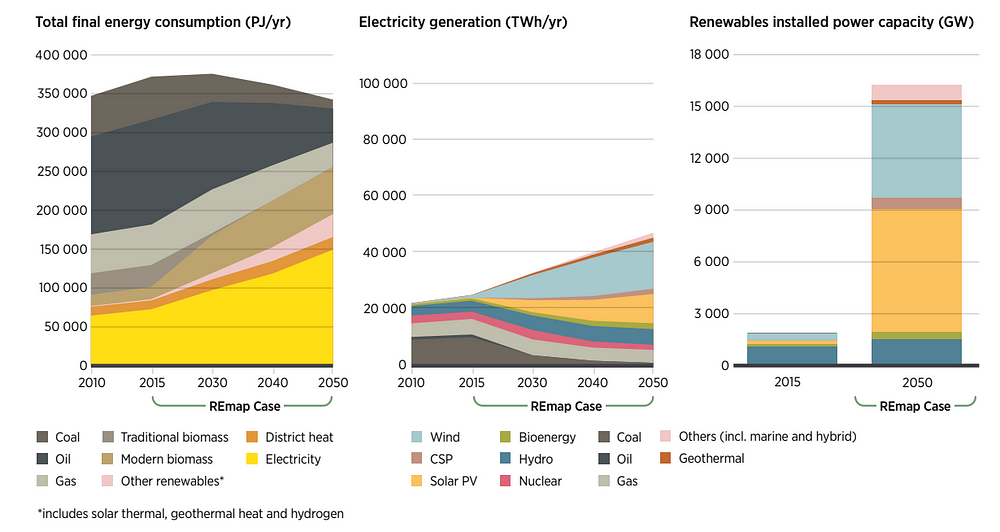By Kent R. Kroeger (Source: NuQum.com; May 29, 2019)
Recently, three major renewable energy milestones passed virtually unnoticed as the mainstream media continues to obsess about the 2020 presidential race, the aftermath of the Mueller Report, and the possible impeachment of President Donald Trump.
The first milestone was announced by the Institute for Energy Economics & Financial Analysis (IEEFA), when it reported that, in April and May,renewable energy sources, including hydroelectricity, will for the first time generate more U.S. electricity than coal-fired plants, signaling a “tipping point” in the advance of renewable energy as this nation’s primary source of electricity generation.
According to the U.S. Energy Information Administration (EIA), all renewables will produce 18 percent of U.S. electricity in 2019, and almost 20 percent in 2020. “Renewable generation is catching up to coal, and faster than forecast,” says Utility Dive editor Robert Walton.
The second milestone was announced by India’s Central Electricity Authority, when it reported India’s solar power industry generated 11.3 terawatt-hours (TWh) of solar power during the 1st quarter of 2019. This is a 16.5 percent increase from the previous quarter and a 57 percent increase from the same quarter in 2018. More significantly, it is the first time solar power in India has surpassed 10 TWh in a quarter, representing about 3 percent of all electricity generation. In total, renewable energy sources account for around 9 percent of all electricity generation in India.
Nine percent may seem small, but the long-term trajectory for renewables in India is on the rapid upswing. Without such progress by India (and China), any hope of achieving zero greenhouse gas (GHG) emissions on a global scale is lost.
The third milestone is less obvious but perhaps the most important. The International Energy Agency (IEA) recently announced that, despite fast Asian economic growth making coal more popular than ever as an electricity generation source, final investment decisions (FIDs) for coal plants have declined annually from 88 Gigawatts (GW) in 2015 to just 22 GW in 2018, the IEA announced in early May. Given that 30 GW of coal plants were retired last year and this retirement rate will continue into the foreseeable future, more coal capacity will be retired than approved each year going forward.
“This is a sneak preview of where we’ll be in three to four years time,” says Tim Buckley, director of energy finance studies at the Institute for Energy Economics and Financial Analysis, a renewable energy advocacy group. “If closures stay where they are, we’re at peak (coal) by 2021.”
The future is bleak for fossil fuels (especially coal)
Peak coal is finally visible on the horizon and the world is inexorably marching towards net zero GHG emissions with certainty in the latter half of this century. While still facing many technological challenges —advances in battery storage being among the biggest— the world’s path to zero-emissions electricity generation by 2050 is not wishful thinking (see Figure 1). And the green transformation of other major GHG sources — transportation and industry— won’t be far behind. Electric vehicles, in fact, may be cheaper than internal combustion engine vehicles by 2022, significantly accelerating the transition.
Figure 1: International Renewable Energy Agency (IRENA) Forecasts for Renewable Energy through 2050

Of course, forecasts can be wrong as they are dependent on a myriad of factors, not all under our control. And the potential for policy changes and economic shocks to stunt our progress can never be ruled out.
Still, even with the Trump administration’s open hostility to climate change science, the U.S. continues its conversion to renewable energy which accelerated during the Obama administration and, according to recent figures from the EIA, has continued in the Trump administration’s first two years (see Figure 2). Indeed, as a source for electricity generation, renewable energy has grown faster annually in Trump’s first two years than during Obama’s eight years (8.2% avg. annual growth vs. 6.3% avg. annual growth, respectively). In comparison, renewable energy’s annual growth during George W. Bush’s tenure was only 1.4 percent.
Figure 2: U.S. Renewable Electricity Generation (Actual and Forecast)

Why the gloom and doom among climate change activists?
If these recent headlines are any indication, the dominate political-media narrative is oblivious to the real progress being made on renewable energy:
Climate change WARNING: Oceans could rise 7 FEET putting 200 MILLION at risk (The Daily and Sunday Express, May 24, 2019)
It is absolutely time to panic about climate change: Author David Wallace-Wells on the dystopian hellscape that awaits us (Vox.com, February 24, 2019)
The grave threat to US civilisation is not China, but climate change (South China Morning Post, May 28, 2019)
“It is, I promise, worse than you think,” environmental author David Wallace-Wells warned in 2017 about climate change’s impact.
How could a dystopian hellscape be anything else but worse than expected?
“Last year in the summer of 2018 in the Northern Hemisphere you had this unprecedented heat wave that killed people all around the world. You had the crazy hurricane season. In California, wildfires burned more than a million acres. And we’re really only just beginning to see these sorts of effects,” Wallace-Wells recently told Vox.com. “If we continue on the track we’re on now, in terms of emissions, and we just take the wildfire example, conventional wisdom says that by the end of the century we could be seeing roughly 64 times as much land burned every year as we saw in 2018, a year that felt completely unprecedented and inflicted unimaginable damage in California.”
Apocalyptic jeremiads like Wallace-Wells’ new book, “The Uninhabitable Earth,” demoralize readers and feed a sense of hopelessness at the precise moment we need to motivate them. Up to now, such climate change alarmism has been an ineffective strategy to build broad public support for policies that will fundamentally reorganize the world economy.
In spite of that, alarmism remains front-and-center in the 2020 U.S. presidential race. In a thinly-veiled response to former Vice President Joe Biden’s recent suggestion of a “middle ground” approach to climate change, New York Representative Alexandria Ocasio-Cortez said: “I will be damned if the same politicians who refused to act (in past decades) are going to try to come back today and say we need a middle of the road approach to save our lives.”
At least on paper, Ocasio-Cortez has backed up her climate change rhetoric with a wide-ranging manifesto, the Green New Deal (GND). On a scale far grander than Obamacare, the last significant government program passed by Congress, the GND envisions the elimination of greenhouse gas emissions in the U.S. by 2030 with renewable and zero-emission energy sources, including nuclear power, making up 100 percent of U.S. power demand. Ambitious on paper, the GND is the ultimate stretch-goal. That is what saving the planet and the people on it will require, says Ocasio-Cortez.
Backbreaking to the U.S. economy is how Republicans describe the GND. “It is quite amazing that someone that is in government — actually elected to the government of the United States of America — would propose that we eliminate all fossil fuels in 12 years,” said Greenpeace Co-Founder Patrick Moore in an interview with The New American. “If we did it on a global level, it would result in the decimation of the human population from 7-odd billion down to who knows how few people.”
With the GND, the progressive movement’s over-stimulated ego meets the Republican’s science agnostic id. Its a septic brew not conducive to successful policymaking.
Yet, we make progress anyway.
To ignore the real advances made in expanding renewable energy capacity in the U.S. (and around the world) is to mischaracterize reality. Furthermore, the momentum in the U.S. has occurred against a hyperpartisan political backdrop where very little substantive climate change legislation has been passed in the past two decades. To the contrary, according to the International Monetary Fund, U.S. direct and indirect subsidies for coal, oil and gas reached $649 billion in 2015. That is more than we spend on national defense.
In an odd way, that should be reason for optimism moving forward. Imagine what this country could do on renewable energy if it stopped distorting the marketplace in favor of fossil fuels and let the free market decide.
That is a project even Republicans might get behind.
- K.R.K.
